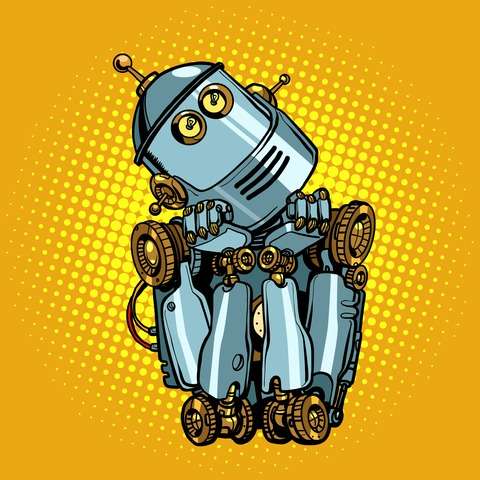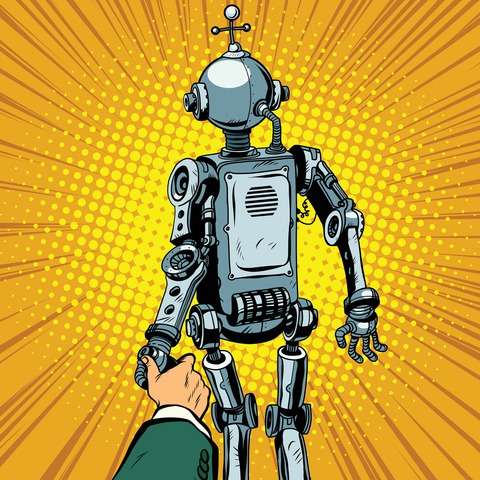The Evolution of the Workplace With Artificial Intelligence
The journey from human-led to AI-driven workplaces is already well underway. AI is not just about bots and robots anymore; it’s becoming a significant part of our everyday work life. From automated customer service to workflow management, AI’s footprint is ubiquitous.
Understanding AI-Driven Displacement
The term AI-driven displacement refers to jobs and tasks in which humans are replaced by Artificial Intelligence. Businesses, particularly those in the technology sector, are exploring AI for its improved efficiency, potential cost savings, and superior capabilities. However, this shift could adversely impact the job market, leading to potential displacement of human workers.
Investigating AI’s Impact on Current Job Roles
AI’s ability to learn and adapt makes it an effective tool for many jobs currently performed by humans. From telemarketing and bookkeeping, to data entry and even some aspects of journalism, AI systems can often perform tasks faster and more accurately than their human counterparts.
AI isn’t limited to simple, algorithm-based tasks. With advances in machine learning and deep learning, complex tasks previously thought to be the sole purview of a human workforce are now also at risk, especially when “soft skills” can be simulated adequately.
Positives of AI in the Job Market
While the initial impressions surrounding AI in the workplace might be about job displacement, there is a more optimistic perspective as well. Certain segments of the job market, such as technology, would likely see a surge, creating a demand for highly-skilled AI experts. Plus, AI systems also need human rationale and insight, creating new roles that interact and manage AI systems.
Additionally, automation could free human employees from repetitive and mundane tasks, potentially leading to increased job satisfaction and productivity.
The Future of Work: New Skills for AI-Driven Workplaces
The future of work might look different due to AI, but it’s not all doom and gloom. The key, as McKinsey suggests, is “retraining and reskilling workers.” Workplaces will need to create an environment where learning new skills and adapting to new technologies is encouraged and enabled.
Preparing for AI-Driven Workplace
The job market has always evolved with advancements in technology. Therefore, preparing for AI-driven workplaces is not just about surviving but thriving in the changing environment. Upskilling and embracing new technologies and methodology is pivotal.
The encouraging news is that an AI-driven job market can create opportunities for those who adapt, upskill, and embrace the approaching changes.
What Is AI-Driven Displacement?
How Can We Prepare for AI-Driven Future Workplaces?
Quote: “We must learn to understand that the secret of AI is about people. We tap into the human capacity to create, think, and learn.” – John E. Smith, AI Expert.
Fact: According to McKinsey, the global Machine Learning market was valued at $8 billion in 2021 and is anticipated to reach USD 117 billion by 2027, booming at a shocking rate of 39% CAGR.

<!–
“tag”: ,
“cat”: “Technology”,
“title”: “An Insight into Computer Vision”,
“excerpt”: “Explore the fascinating world of computer vision and how it interconnects with sophisticated technologies such as artificial intelligence, machine learning, deep learning, and neural networks.”,
“deep-knowlege”: “Computer Vision Basics, Computer Vision and AI, Computer Vision and Machine Learning, Deep Learning in Computer Vision, Practical Applications of Computer Vision, Future of Computer Vision”
Understanding Computer Vision
To explain in simplest terms, Computer Vision is a field of artificial intelligence that trains computers to interpret and understand the visual world. By processing, analyzing and understanding digital images, computer vision systems can accurately identify and classify objects, and even react to what they ‘see’.
Computer Vision and Artificial Intelligence
At the core of computer vision lies artificial intelligence. AI plays a crucial role in teaching machines how to ‘see’ and interpret images just like humans do. AI vs. Machine Learning vs. Deep Learning vs. Neural … provides a comprehensive insight into how these different concepts, including AI, correlate and intertwine.
The Role of Machine Learning in Computer Vision
Machine learning offers a framework for teaching computers to learn and make decisions from data. In the field of computer vision, machine learning algorithms are used to automatically learn and improve from experience without being explicitly programmed. This enables computer systems to recognize patterns and features in images and videos more accurately.
Deep Learning: A Powerful Tool in Computer Vision
Deep Learning, a subdomain of machine learning, utilizes neural networks with several layers (deep structures) for data analysis and decision-making. In the context of computer vision, deep learning techniques enable computers to process and understand visual data from the real-world environment in a more comprehensive and detailed manner.
How Neural Networks Complement Computer Vision
A critical component in the adoption of Deep learning in Computer vision is the use of Neural Networks. These systems, which are designed to mimic the human brain and nervous system, significantly enhance the machine’s ability to understand and interpret complex visual data, be it images or real-time videos.
Practical Applications of Computer Vision
From real-time traffic analysis in smart cities to face recognition in security systems, product inspections in manufacturing lines, and autonomous vehicles, the practical applications of computer vision are vast and transcending.
Challenges in Computer Vision
While Computer Vision has promising potential, it comes with its challenges. Some of these include problems with quality of data, lack of trained models, computational resources, and the ability to generalize what the model ‘sees’, among others. However, continuous research and advances in AI and related technologies are paving the way for overcoming these challenges.
The Future of Computer Vision
The future of computer vision looks promising. As we continue to make advancements in AI, machine learning, deep learning, and neural networks, we can expect significant improvements in how efficiently and effectively computer vision systems operate. The convergence of these technologies will open a new dimension in the way computers interact and interpret the visual world.
What is the role of Artificial Intelligence in Computer Vision?
How does Deep Learning contribute to Computer Vision?
“The development of full artificial intelligence could spell the end of the human race…It would take off on its own, and re-design itself at an ever-increasing rate. Humans, who are limited by slow biological evolution, couldn’t compete, and would be superseded.” – Stephen Hawking on Artificial Intelligence.
The global market for computer vision is expected to reach $48.6 billion by 2022, growing at a compound annual growth rate (CAGR) of 38.9% during the forecast period. Furthermore, according to McKinsey Global Institute, AI and Machine Learning, in which Computer Vision forms a major part, will potentially create an additional value of $13 trillion annual by 2030.

An Overview of the Global AI Landscape
Artificial intelligence (AI) represents an area of computer science that emphasizes the creation of intelligent machines capable of reacting and working like humans. With advancements in machine learning, algorithms, and computing power, AI has burst onto the global stage as a crucial driver of technological change. It’s worth noting that within the vast AI landscape, machine learning and neural networks play a significant role in advancing AI applications and capabilities.
China and the AI Race
China has emerged as a global leader in the adoption of AI technology. China’s swift adoption of AI can be attributed to a combination of government support, market scale, data accumulation, and a highly competitive tech ecosystem. By investing heavily into AI research, creating conducive policies, and pushing for AI incorporation in various sectors, China has demonstrated a strong commitment to this transformative technology.
Government Support
The Chinese government’s enthusiastic promotion and support for AI technology have been pivotal in the country’s acceleration in the AI adoption race. The government has laid out ambitious plans for AI, envisioning China to be the world leader in AI by 2030. The support has come in the form of significant funding, favorable regulations, and strong policy support.
AI Research and Development in China
China is making significant investments in AI research and development, with many Chinese universities and private companies contributing to the innovation. Research strengths are particularly notable in areas such as deep learning and neural networks, critical components of AI.
Competition Among Local Tech Giants
One of the significant factors behind China’s success in AI is the fierce competition among the country’s tech giants such as Alibaba, Tencent, and Baidu. These companies are investing massive amounts in AI R&D and promoting the integration of AI in various sectors, which accelerates the overall pace of AI adoption in China.
AI Education and Workforce
With the commercialization and proliferation of AI technology, there is a growing demand for AI professionals in China. Chinese institutions of higher education are making strides in providing quality AI education and producing a skilled AI workforce capable of driving further growth and innovation.
AI Applications and Adoption Across Sectors
AI has been extensively incorporated in different sectors in China including healthcare, education, manufacturing, logistics, and urban planning. The use of AI technologies is revamping traditional industries and driving efficiency.
Global Impact of China’s Leadership in AI
China’s leadership in AI adoption is shaping global AI trends and developments. China’s advancements in AI research, coupled with its streamlined regulations, are influencing international standards and norms around AI use and deployment.
Final Remarks
As a quote from the famous entrepreneur Elon Musk goes, “AI is going to be extremely important. I think it’s going to be part of everyday life.” China’s rapid advancement in AI testifies to this claim, as the nation continues to lead the global AI race, potentially shaping the future of this transformative technology.
What factors have contributed to China’s dominance in AI technology?
What are the global implications of China’s leadership in AI?
Artificial Intelligence – Addressing the Fear of Job Loss Due to AI

Sentiment Analysis Addressing the Fear of Job Loss Due to AI
More about Artificial Intelligence: Next Article
Artificial Intelligence Research: Are We Ready? The Implications of AI on Employment
Addressing the Fear of Job Loss Due to AI
© 2023 Our Website – Artificial Intelligence. All Rights Reserved.